The art and science of chord fingering. Learning your basic open position chords in common keys. We have four fingers and there're all not equal. Some shorter then others and some stronger that others. Everybody's hand is a little different. This does play a role in fingering chords.
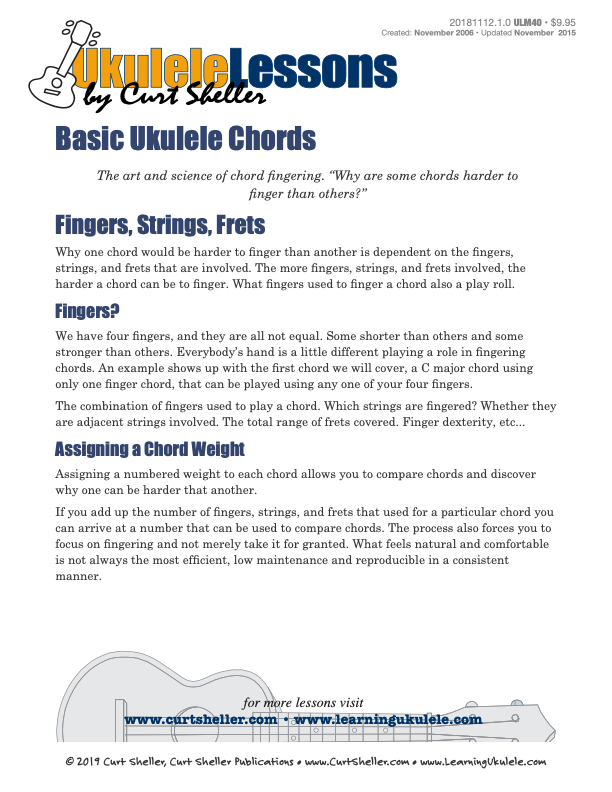
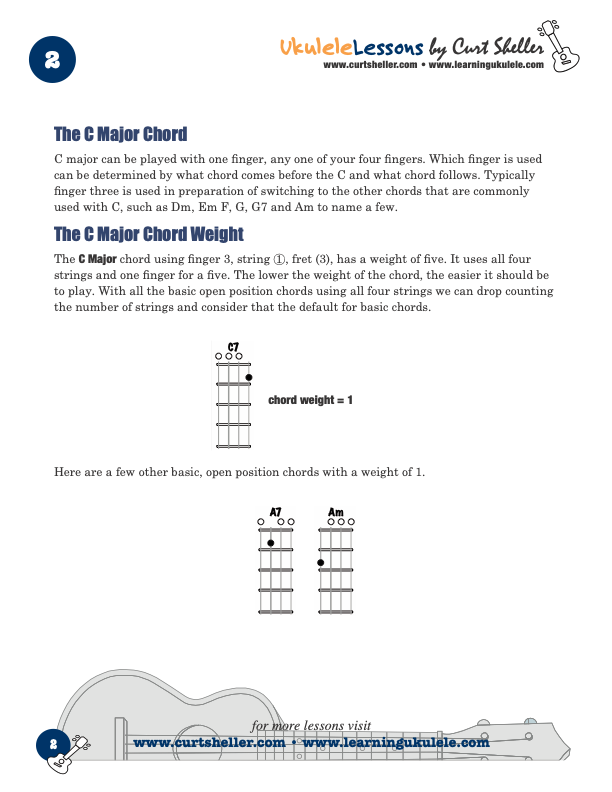
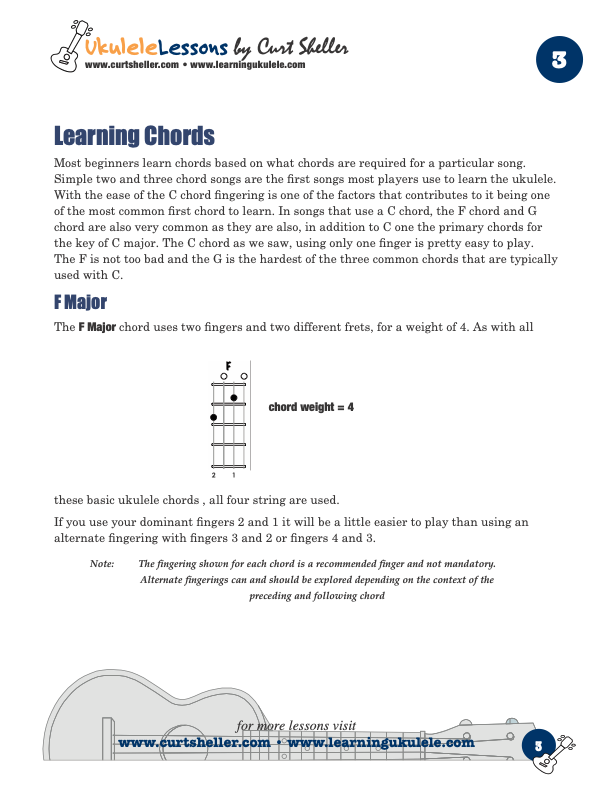
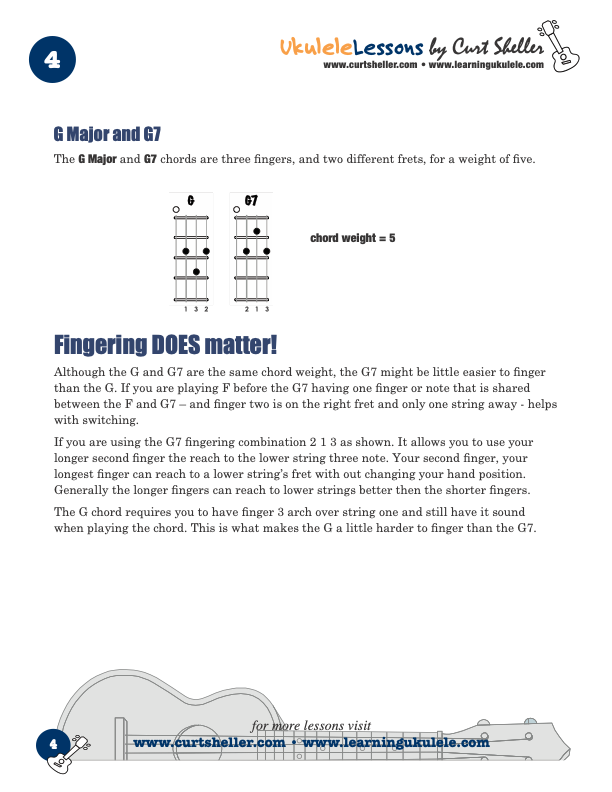

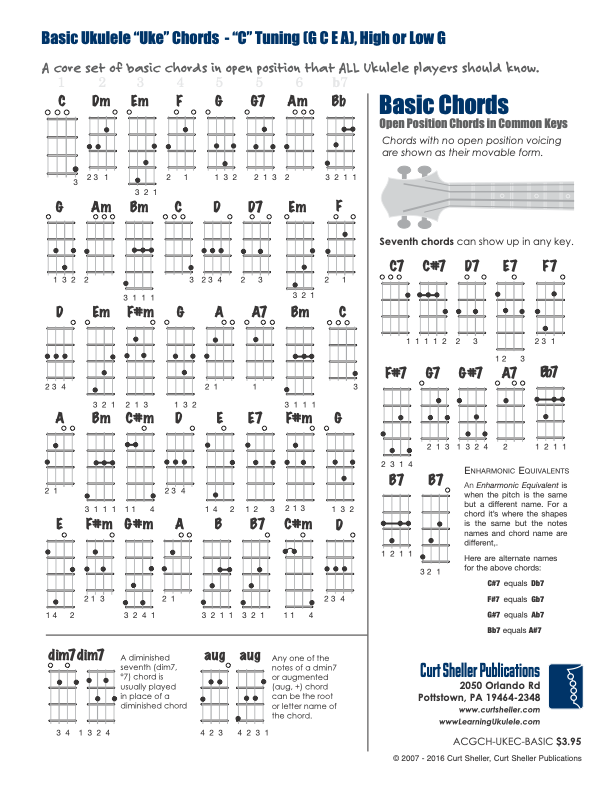






The art and science of chord fingering. Learning your basic open position chords in common keys.
Fingers?
We have four fingers, and they're not all equal. Some shorter than others, and some stronger than others. Everybody's hand is a little different. This does play a role in fingering chords. An example shows up with the first chord most ukulele players learn, a C major chord. It's a one finger chord. That one finger can be anyone of your four fingers.
The combination of fingers used play a role. Whether the fingers are on adjacent strings or skipping strings, different frets or adjacent frets, the total range of frets that need to be covered, your finger dexterity, finger length, etc. There are many variables that come into play. Efficiency of motion and energy are key to any technique for fingering chords.
So, What Fingering Does One Use?
You can use any finger, any part of your fingers you like, as long as it's yours.
One thing that I've seen in my years and years of teaching with my private students and workshop attendees is — without guidance and a bit of research, one tends to pick a fingering, not based on any science — but what is perceived to be natural.
What is Natural
is often not what is efficient and low maintenance. And, often particular musical situations throws this science out the window, and you just have to get the required notes to come out. It often feels as if your fingers are playing that old game of Twister .
You can basically use any finger you like, as long as it is yours. However, here a few points to keep in mind
The art and science of chord fingering. Learning your basic open position chords in common keys.
Fingers?
We have four fingers, and they're not all equal. Some shorter than others, and some stronger than others. Everybody's hand is a little different. This does play a role in fingering chords. An example shows up with the first chord most ukulele players learn, a C major chord. It's a one finger chord. That one finger can be anyone of your four fingers.
The combination of fingers used play a role. Whether the fingers are on adjacent strings or skipping strings, different frets or adjacent frets, the total range of frets that need to be covered, your finger dexterity, finger length, etc. There are many variables that come into play. Efficiency of motion and energy are key to any technique for fingering chords.
So, What Fingering Does One Use?
You can use any finger, any part of your fingers you like, as long as it's yours.
One thing that I've seen in my years and years of teaching with my private students and workshop attendees is — without guidance and a bit of research, one tends to pick a fingering, not based on any science — but what is perceived to be natural.
What is Natural
is often not what is efficient and low maintenance. And, often particular musical situations throws this science out the window, and you just have to get the required notes to come out. It often feels as if your fingers are playing that old game of Twister .
You can basically use any finger you like, as long as it is yours. However, here a few points to keep in mind
Basic `Ukulele Chord Fingering
A Few Things to Keep and Eye Out For
- Play Notes Right Behind the Frets —but not on the fret. This is the place that other allows you to apply the least amount of finger pressure. And, remember, the thumb's main role is to supply opposite and equal pressure that the finger(s) are applying.
- Longer Fingers Can Play Lower Strings — your longest finger is pretty much the middle finger, the shortest finger is your pinky, and it's a tossup between the index and ring fingers. This means when possible, use finger two on the lower (close to your nose) strings four and three.
- Dominant Fingers are Stronger — Your dominant fingers, the index and middle finger, are the strongest and can do the heavy lifting.
- Overlapping Fingers — Overlapping fingers, this is where finger three, the ring finger can overlap on the pinky, finger four. You can see this in the photo below. Finger two, the middle finger, can overlap over finger three, the ring finger. The index finger is on its own.
- Smaller Hands — Smaller hands and naturally with smaller finger can get into tighter players, i.e., those closer frets of the Soprano and Concert ukuleles.
- Explore Alternate Fingers — Given that you can use any finger you like. You can explore alternate fingerings and make music and efficiency determine to best fingering for you. In the context of a musical passage one fingering might be better than another.
The Pesky Open Position D Chord

With three notes in the same fret on adjacent strings — this is one of those chords that gives players trouble.
Any fingering is possible, with a few listed that I have run across and my commentary:
- Chord Grids — A chord grid in a songbook can only show one fingering if they show one at all. And, it might not be the best finger for you or the musical situation.
- 1 2 3 —Only finger three, the ring finger can typically get right behind the fret. Sometimes finger two, the middle finger can overlap a bit on finger three and get closer to the fret but not quite on it. Finger one, the index finger, is pretty far away.
- 2 3 4 — a lot better the above finger where the smaller finger can fit in there and get closer to the frets. Still not ideal.
- 2 1 3 — Again finger one, the index finger is pretty far from the fret.
- 3 2 4 — a bit better than the previous fingering but not ideal.
- 2-2 3 — This is my
Mushy D
chord. A term I coined, try to get this chord efficient using the guidelines above. All notes are right behind the fret, string on is open and fingers one and four can spring into action for some melodic support. - 2-2-2 — Very impolite finger, as well as inefficient in that you pretty much take all the other fingers out of commission, and they can't really get ready for what might be next.
- 3-3-3 — If you've been reading the previous comments, you can guess what is going on here.
- Thumb — This is like a stagehand not staying off-stage in their support role.

Mushy D — This is my default Fingering for D when there is not an overwhelming musical reason for a different fingering.
Bad
Fingering
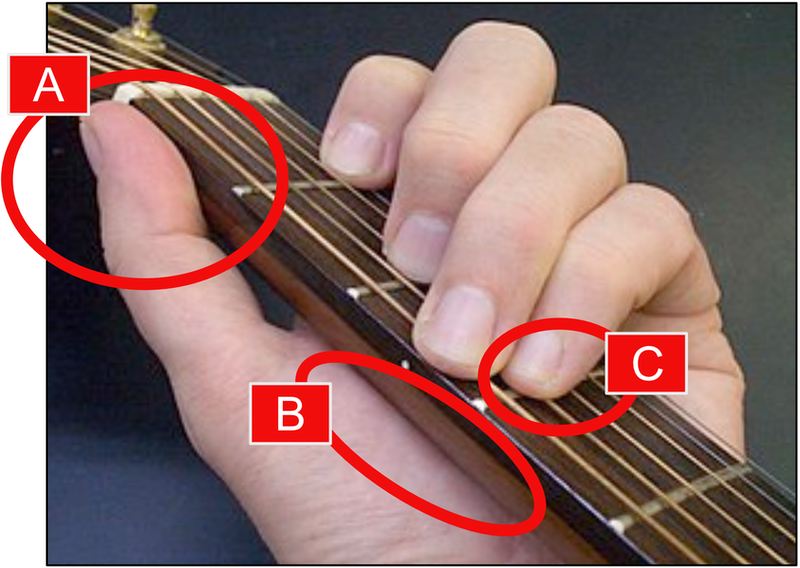
Photo from Wikipedia. No shortage of bad examples on-line.
This above photo is intended to show a chord and inadvertently shows several points of bad technique. (Curt: I added all the labels)
- A – Thumb creeping above the neck and out of its support role.
- B – Palm touching the neck, which limits the range and dexterity of the fingers' ability to finger the individual notes of a chord.
- C – The pinky on the frets and not right behind it. I'd be surprised if the C note on string five sounded when played. The same can be said for the other C note on string two and the index finger being on the frets and not behind it.
I created the following photos to show several points of bad technique:
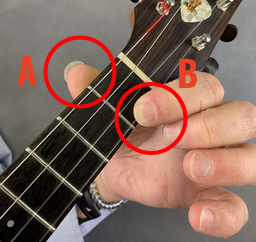
- A) Thumb too high in a non-supporting role.
- B) Too far from the fret.
- C*) Fingers not over fingerboard and out of position.

- A) Knuckle collapsed. The end knuckle of the third finger is the weakest knuckle on the hand and needs more work.
- B) "Impolite Fingering" - Finger one, the index finger, is the only finger that is really capable of a Full barre across all the four strings.
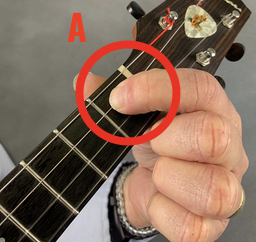
- B) Too far from the fret. Right behind the fret is the position of the least effort to get a clear note. Any further away from the fret and you need to press harder.
* All the fingers not involved in fingering the actual chords in the above photos are out of position. Most likely to show a chord fingering — but not good actually efficient fingering, and really drives home the point of why photos are not the way to show a chord.
Recap: Some Guidelines to Watch For
- Longer fingers, lower strings.
- Play notes right behind frets when possible.
- Finger Three can stack over finger Four.
- Finger Two can stack over finger Three.
- Don't take a finger off a string just to put it back on the same string.
- Finger One is a stronger barre than fingers two or three. Pinky is tricky as a barre.
- Pinky can get into tighter places than other fingers.
- Thumbs primary role is to support the fingers by applying opposite and equal pressure.
- High Thumb, over strings four, three, etc is to mute strings during fast rhythmic/percussive strums and NOT to actually to play notes.
- Keep fingers pointing to string and over the strings ready to go. Not pointing to the door, ceiling, or floor. Always ready to go.
- You can use any part of your finger to play a note in a chord. Try finger one on string four fret (5) and the same finger play string one fret (3).
Each chord in the Chord a Day Series shows alternate fingers.
Related Lessons, Videos, Lesson Series, Songs, Books & Reference Charts, Resources & Assets, Workshops are below.
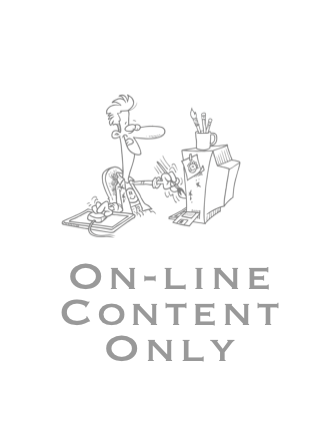
"Hearing The Changes" is knowing what the chords of a song or chord progression are and when they change. This lesson gets you on the road to developing this ability. This involves know the chords of the keys and scales that are used for common progressions and songs. And the ability to recognize the sound of intervals, the distance between intervals.

"A strum is the execution of a specific rhythmic pattern, at tempo, in a particular style." A strum can be broken down into its rhythmic syllables. These rhythmic syllables are defined by what particular style is being performed. Basic ukulele strums and variations to get you started.

A core set of basic ukulele chords that ALL Left Handed Ukulele players should know in the five common keys of C, G, D, A and E. With the possible seventh chords for the same common keys. The chart is organized in common keys and covers basic chords in these keys.
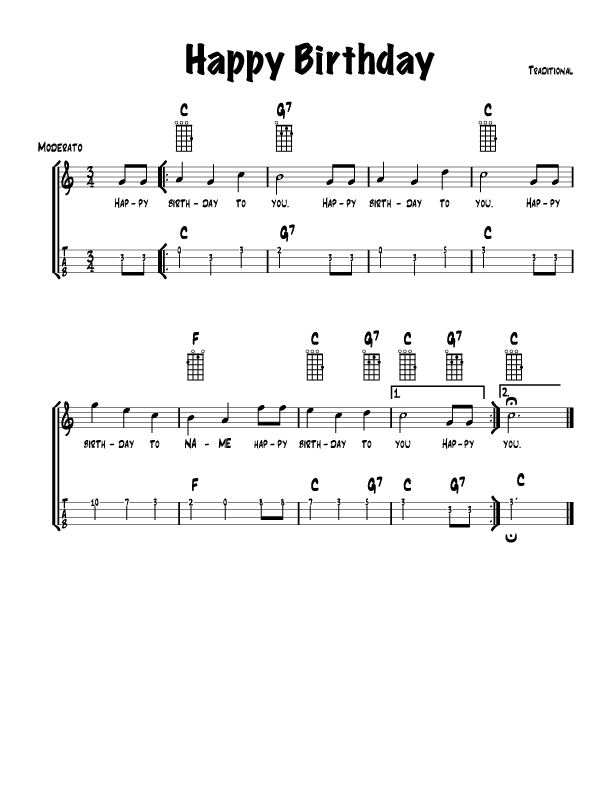
Happy Birthday to You, also known more simply as Happy Birthday, is a song that is traditionally sung to celebrate the anniversary of a person's birth. According to the 1998 Guinness Book of World Records, "Happy Birthday to You" is the most recognized song in the English language, followed by "For He's a Jolly Good Fellow" and "Auld Lang Syne".
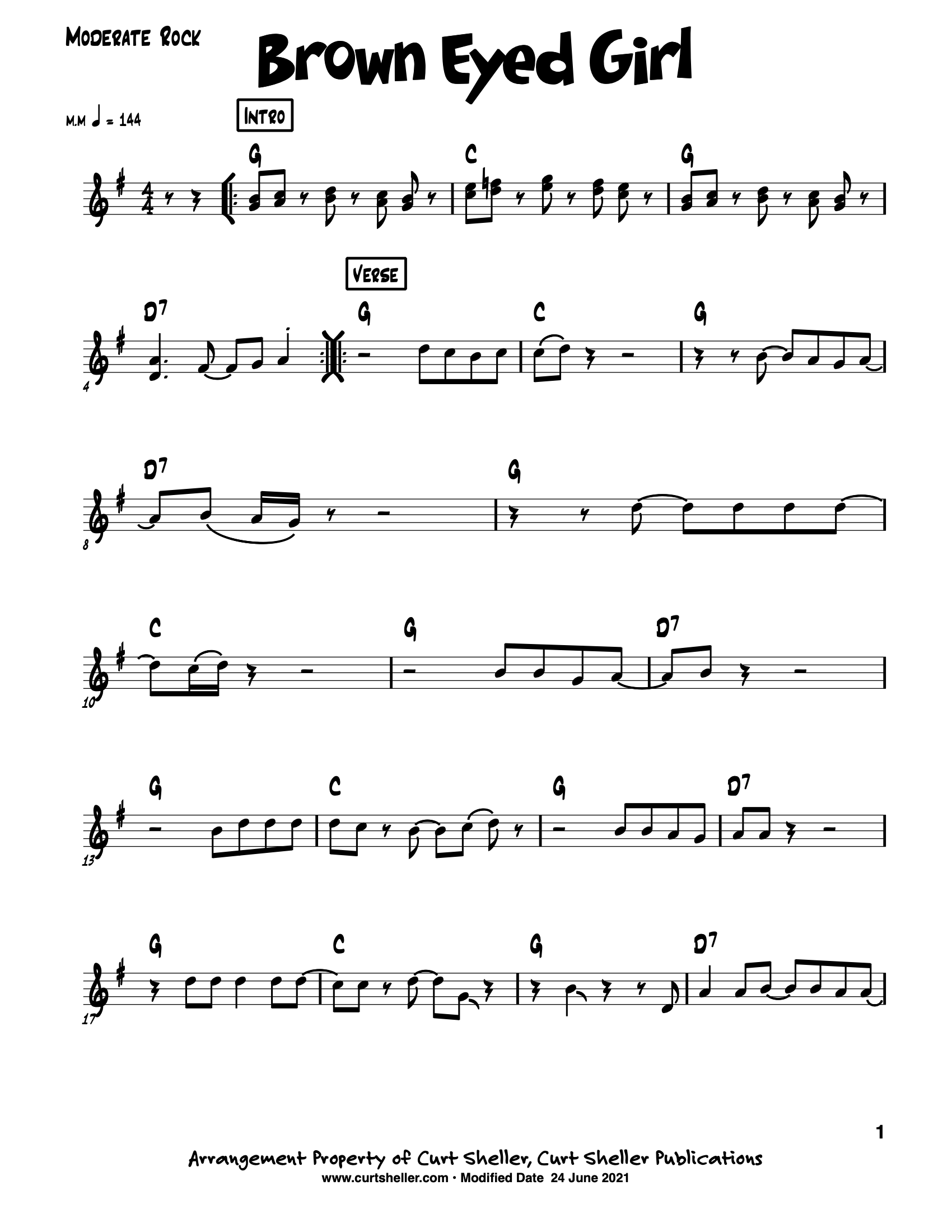
Brown Eyed Girl is a song by Northern Irish singer-songwriter Van Morrison. Written and recorded in 1967 by Van Morrison and produced by Bang Records chief Bert Berns, it was first released in May 1967 on the album Blowin' Your Mind!. When released as a single, it rose to number eight on the Cashbox charts, and reached number ten on the Billboard Hot 100.

Finally, learn the names of the notes of the ukulele fingerboard in C tuning .

Learn the six fingering principles to navigating the ukulele fingerboard. Fingering is one of the most universal topics. Book: Six Secrets of the Ukulele Fingering

Harmonic Analysis is the understanding of the functional sequence of chords. It is the process used to analyze the harmonic structure of a progression, song or composition. Book: Harmonic Analysis for Scale Selection and Chord Substitution

Learn to read single note melodies in the first/open position is a lot easier than you might think. Book: Ukulele – Reading Music Series – Primer

An organized collection of daily practice and reference material for the contemporary ukulele player for developing the vocabulary and knowledge necessary for single note playing. Book: Daily Practice Material for the Contemporary Ukulele
Checkout the Books & Reference Charts for additional Handy, Dandy Reference Charts.

Ukulele Fingerboard Chart for C Tuning, Low or High G – G C E A

Ukulele Fingerboard Chart for G Tuning, Low or High A – D G B E

A handy reference chart of all 15 major and relative minor key signatures. US Letter 8.5 x 11 sized (ANSI-A), A4
Checkout the Books & Reference Charts for additional Handy, Dandy Reference Charts.










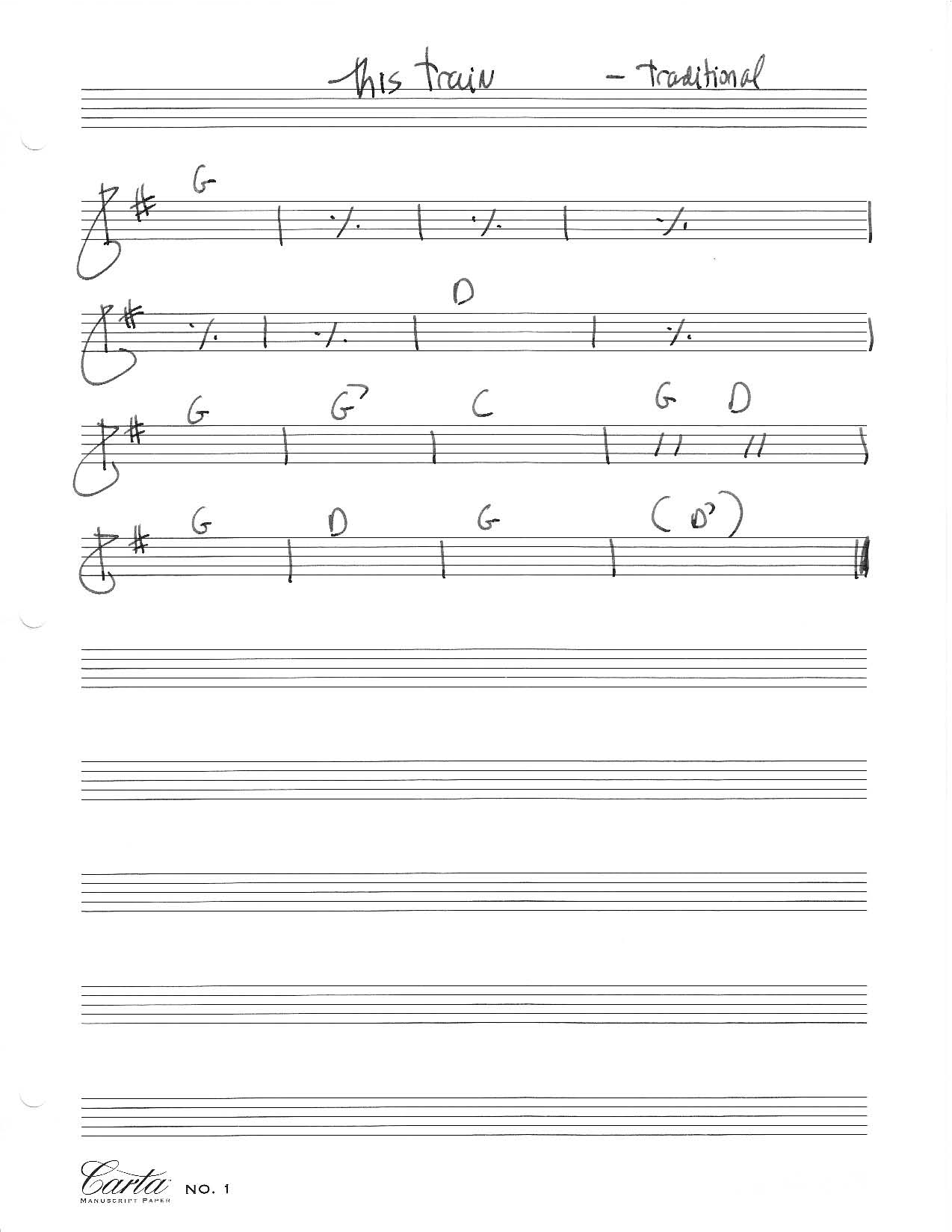
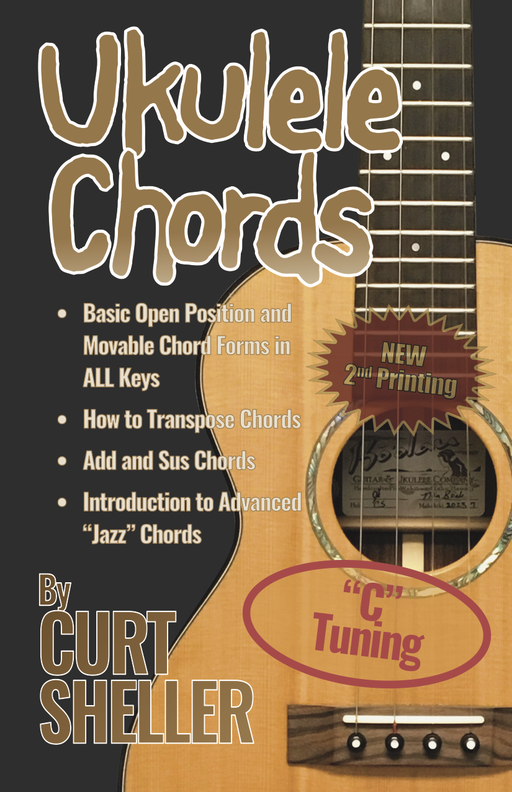

.jpg)